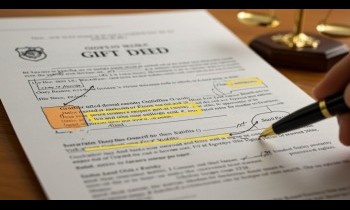Cognizance of Offences by Magistrates - CRPC 190

Date : 01 Apr, 2022
Post By Vishal Kumar
Section 190- Cognizance of offences by Magistrates. (1) Subject to the provisions of this Chapter, any Magistrate of the first class, and any Magistrate of the second class specially empowered in this behalf under sub- section (2), may take cognizance of any offence- (a) upon receiving a complaint of facts which constitute such offence; (b) upon a police report of such facts; (c) upon information received from any person other than a police officer, or upon his own knowledge, that such offence has been committed. (2) The Chief Judicial Magistrate may empower any Magistrate of the second class to take cognizance under sub- section (1) of such offences as are within his competence to inquire into or try.
INTRODUCTION Taking cognizance, generally, means taking notice of the offence that has occurred. Taking cognizance does not involve any formal procedure laid down by law, but a magistrate is said to take cognizance when he applies his mind to the offence that has been committed before the offence and the accused is sent for trial. When the magistrate takes cognizance, he is supposed to apply his judicial mind and see whether an offence is committed. If the offence is committed, then it is sent for trial. Section 190 talks about the power of the magistrate to take cognizance of an offence. IMPORTANT CONCEPTS IN SECTION 190 • Section 190 gives power to both first-class and second-class magistrates to take cognizance of an offence. A first-class magistrate is one who can give a sentence to an accused of up to 3 years in jail and can also charge a fine of rupees up to 5000. A second-class magistrate is one who can pass a sentence against the accused of up to 1 year of imprisonment and can charge a fine of up to 1000 rupees. • A second-class magistrate can take cognizance under this section only when the chief judicial magistrate has empowered him/her to do so. • There are pointers under which a magistrate can take cognizance of an offence under this section. The pointers are mentioned in 190(1). The pointers are that firstly, a magistrate can take cognizance in furtherance of a complaint that has been made to him regarding the commission of an offence. Secondly, a magistrate can take cognizance when it is satisfied upon reading the police report that there is a case being made out. Thirdly, when the magistrate receives information regarding any offence other than from a police officer, or if he is convinced that there a crime has been committed, he can take action Suo moto. • One important point to note here is that if a magistrate has taken cognizance of any offence under section 190(1) (a) or (b) and if the magistrate was not empowered by the law to take cognizance based on the lack of jurisdiction, then the proceedings conducted by him in furtherance of taking of cognizance will not be set aside as long as it is known that the cognizance was taken in good faith. For example, if A, a magistrate, takes cognizance of a matter under section 190(1) (a) or (b), which he was not supposed to take because he had no jurisdiction in that matter, the proceedings conducted by A after taking cognizance will not be set aside if it is proved that the cognizance was taken in good faith by A. • If the magistrate takes cognizance under 190(1)(c) which he was not supposed to take as per the law, then the proceedings conducted by him will be void. This is mentioned under section 461 (k) of CrPC.
COGNIZANCE IS TAKEN OF THE OFFENCE AND NOT THE OFFENDER It is amply clear that section 190 empowers a magistrate to take cognizance of the offence and section 204 then talks about the further procedure once the magistrate is satisfied that a case is made out. Section 204 CrPC comes into force once the magistrate has taken cognizance. In the case of Sonu Gupta v. Deepak Gupta, the court held that it has to be made sure that the cognizance of the offence is taken and not the offender. Hence, at the stage when 204 is invoked, when the charges are framed and there are sufficient grounds, that is known as taking the cognizance of the offender. But the stage when 190 is invoked then it is known as taking cognizance of the offence and not the offender. The same principle was reiterated in the case of State of W.B. and Another vs. Mohd. Khalid and Another. MEANING OF COMPLAINT UNDER SECTION 190 A complaint is defined under section 2(d) of CrPC. It is an allegation put forward by a person to a magistrate with a view that the magistrate will take that allegation into notice. The complaint also includes the police report which is submitted to the magistrate after the investigation is complete. Under this section and generally, as well, a complaint can be put in writing or can be oral too. The important point to keep in mind is that the complaint must show that a prima facie case is being made out. If a complaint has been made and the magistrate takes cognizance of a matter under 190 (1) (c), then he is obligated to tell the accused that the accused has the right to get tried by another court. This is mentioned in section 191 of CrPC LANDMARK JUDGEMENTS 1. The State of West Bengal vs. Abani Kumar Banerjee- In this case, the Calcutta High Court discussed the scope of the words ‘taking cognizance’ in depth. The court stated that this term is not defined anywhere in the criminal procedure code but keeping in mind the circumstances of the case, it can be said that a magistrate is said to have taken cognizance when he applies his judicial mind in a case. The court also stated that the magistrate is not obligated to take cognizance of an offence based on a complaint that has been presented before him. 2. Devarapalli Lakshminarayana Reddy & Ors. Vs. V. Narayana Reddy & Ors. - In this case, the Supreme court ruled that the procedure mentioned in section 156(3) wherein a magistrate can order an investigation is different from taking cognizance under section 190. If a magistrate is of the view that a cognizable offence is being made out from the complaint, he can order the police to initiate an investigation under section 156(3). If the magistrate takes this course, he is said to have not taken cognizance of the offence under section 190. 3. S.K. Sinha, Chief Enforcement Officer vs. Videocon International Limited & Anr. - In this case, the Supreme court discussed whether ‘taking cognizance’ and ‘issuing the process’ of a criminal case are the same things. The Supreme court held that both the phrases hold different meanings because taking cognizance does not involve any formal action on behalf of the magistrate. it is a mere taking notice of the offence. Whereas issuing of the process is a more formal action that is taken once the cognizance has been taken. Hence both are different phrases and cannot be equated. CONCLUSION It is important to make sure that there is a clear distinction between taking cognizance and any other process that follows. If the distinction is not clear, it can prejudice both the accused and the judicial system. The judicial system is not meant to falter at any point in time. Hence it becomes extremely important that a person knows in detail what cognizance is. It is the basic step once the complaint has been registered with the magistrate. cognizance is important because it acts as a layer of caution for the judiciary. If the magistrate is of the view that there is no prima facie case, then the magistrate will not take cognizance and the accused will not have to go through the tedious system of justice. Looking for a Lawyer? Lawtendo is a platform for you to help in hiring legal counsel. We work twenty-four hours to provide the best lawyers who suit the needs of the customers. We work with a wide range of lawyers whose areas of expertise range from divorce, court marriage, and registration, property possession delay, cheque, and money recovery; to will drafting and agreement, employment issues, and builder disputes. In addition to this, we also deal with cases of wrongful dishonour of cheques. Lawtendo is a hassle-free platform that works rigorously to make sure the best lawyer reaches their client in time. Written by- Tarushi Goel, a fifth year law student of O.P Jindal Global University. She is currently pursuing BA LLB and is inclined towards legal research.





